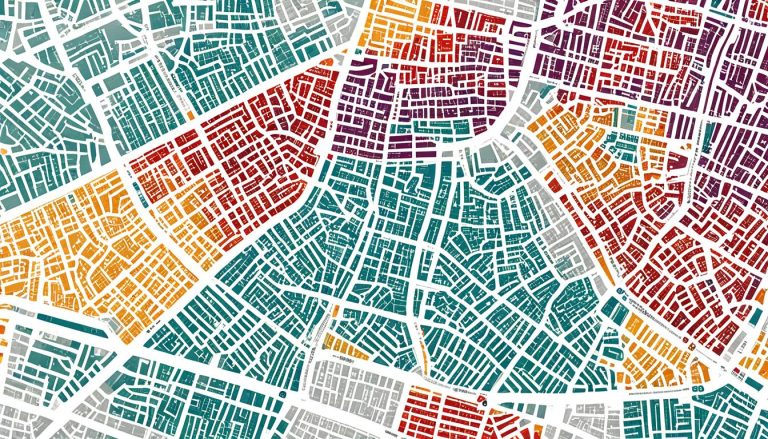The UK’s Capital Gains Tax (CGT) rules are set to change for the 2025/26 tax year, bringing higher rates and lower allowances. For property owners, investors, and business owners, these changes will have a significant impact on tax liabilities. Understanding these changes early can help you make informed decisions on when to sell, gift, or transfer your assets.
With increases in tax rates and reductions in the Annual Exempt Amount (AEA), more people will be required to report and pay CGT.
This guide offers a detailed breakdown of the changes, who will be affected, and strategies to reduce your CGT liability. If you own property, shares, or business assets, this information is vital for your financial planning.
What Is Capital Gains Tax (CGT) and Why Does It Matter?

Capital Gains Tax (CGT) is a tax on the profit (or “gain”) made when selling, transferring, or disposing of certain valuable assets. The most common assets subject to CGT are:
- Property (except your main residence)
- Shares and stocks (not in an ISA or pension)
- Business assets (including equipment and intellectual property)
The “gain” is the difference between the sale price and the purchase price of the asset. For example, if you bought a rental property for £200,000 and sold it for £250,000, the gain would be £50,000, and you would owe CGT on that amount.
CGT affects property investors, business owners, and shareholders alike, making it a critical part of financial planning. The changes coming into effect in 2025/26 mean more people will have to report their gains and pay higher rates of tax.
Key Changes to Capital Gains Tax Allowance in 2025/26

1. Reduction in the Annual Exempt Amount (AEA)
The Annual Exempt Amount (AEA) is the tax-free threshold for CGT. In previous years, individuals and trustees could offset a significant portion of their gains using this allowance, meaning they only paid CGT on amounts exceeding it.
Key Changes:
- The AEA will be significantly reduced, meaning more people will have to report and pay CGT.
- Trustees, in particular, will face a more substantial impact as their exempt amount is typically half of an individual’s AEA.
Impact on You:
- If you plan to sell property, shares, or business assets, you will likely pay CGT on a larger portion of the gain.
- The reduction increases the likelihood of being required to report disposals to HMRC.
2. Changes to Business Asset Disposal Relief (BADR)
Business Asset Disposal Relief (BADR) (formerly known as Entrepreneurs’ Relief) allows business owners to pay a lower CGT rate on the sale of qualifying business assets. Previously, this rate was set at 10%, making it a valuable relief for entrepreneurs selling their businesses.
Key Changes:
- The relief rate will increase from 10% to 14% for disposals from 6 April 2025.
- It will increase again to 18% for disposals from 6 April 2026.
Impact on You:
- If you are a business owner planning to sell, you may face higher taxes if you wait until after April 2025.
- You may want to consider selling your business or qualifying assets before the rate increases.
3. Updates to Investors’ Relief
Similar to BADR, Investors’ Relief offers a lower rate of CGT on the sale of qualifying shares. Historically, this rate was also 10%, which provided significant tax savings for investors.
Key Changes:
- The Investors’ Relief rate will increase from 10% to 14% for disposals from 6 April 2025.
- The rate will further increase to 18% for disposals from 6 April 2026.
Impact on You:
- Investors selling shares in qualifying companies will face higher taxes if disposals are made after April 2025.
- If you have qualifying shares, you may want to explore options for disposal before the rate changes.
4. Changes for Trustees and Personal Representatives
Trustees and personal representatives (those managing estates) are also affected by the changes. Trustees often manage assets held in trust for beneficiaries, while personal representatives handle estates on behalf of deceased individuals.
Key Changes:
- From 30 October 2024, the rate of CGT for trustees and personal representatives will increase from 20% to 24%.
- This applies to disposals made by trustees of settlements and personal representatives managing estates.
Impact on You:
- Trustees and executors may need to factor in higher tax liabilities when handling assets.
- More estate beneficiaries may receive reduced payouts due to increased CGT.
How Will the 2025/26 Changes Impact You?

The Capital Gains Tax (CGT) changes for 2025/26 will have far-reaching effects on property owners, business owners, investors, trustees, and personal representatives. These groups will face higher tax rates, reduced tax-free allowances, and, in some cases, increased reporting obligations. Here’s a closer look at how the changes will impact different individuals and entities, with clear examples to highlight the financial impact.
1. Impact on Property Owners
Property owners, especially those with second homes, buy-to-let properties, and holiday homes, will feel the effects of the CGT changes. While the tax rates for residential property disposals (18% and 24%) remain unchanged, the reduction in the Annual Exempt Amount (AEA) will result in a higher taxable portion of their gains.
Key Impacts for Property Owners:
- Reduced AEA: Property owners will lose the benefit of a larger tax-free allowance, meaning more of their gains will be subject to CGT.
- Increased Tax Reporting: More people will need to report their property disposals to HMRC, especially if their gains exceed the reduced AEA.
- Same Tax Rates: While the AEA changes, the tax rates for residential property disposals will remain at 18% (basic rate) and 24% (higher rate).
Example Scenario:
- Before 2025/26: Emma sells a second home and makes a gain of £30,000. With a current AEA of £12,300, she only needs to pay CGT on £17,700. If she’s a higher-rate taxpayer, her CGT rate is 24%, so she pays £4,248 in tax.
- After 2025/26: If the AEA is reduced to £6,000, Emma will now have to pay CGT on £24,000 of her gains. At a rate of 24%, she pays £5,760 in tax — an increase of £1,512 in tax liability.
2. Impact on Business Owners (Business Asset Disposal Relief)
Business owners who plan to sell their businesses or qualifying business assets will face significantly higher tax bills. The rate for Business Asset Disposal Relief (BADR), which was previously 10%, will rise to:
- 14% from 6 April 2025
- 18% from 6 April 2026
This change directly affects entrepreneurs and business owners who had previously relied on a lower rate of 10% to sell businesses and retire.
Key Impacts for Business Owners:
- Higher Rates: BADR rates increase from 10% to 14% (2025) and 18% (2026), which raises the tax burden on the sale of businesses.
- Timing Matters: Business owners planning to sell should consider doing so before 6 April 2025 to lock in the current 10% rate.
- Reduced Profits: Entrepreneurs selling businesses after the changes may face significantly lower post-sale profits due to the higher tax rates.
Example Scenario:
- Before 2025/26: David sells his small business for £500,000, resulting in a taxable gain of £300,000 after allowable deductions. Under the 10% BADR rate, he pays £30,000 in CGT.
- After 2025/26: If David sells his business after 6 April 2025, his CGT rate increases to 14%, and he pays £42,000 — an increase of £12,000.
- After 2026: If David waits until after 6 April 2026 to sell, his CGT rate increases to 18%, and his CGT bill jumps to £54,000 — an increase of £24,000 compared to selling before 2025.
3. Impact on Investors (Shares and Stocks)
Investors who trade in shares and stocks outside of tax-sheltered accounts (like ISAs and pensions) will be subject to higher CGT rates and a lower AEA. If you sell shares and make a gain, a larger portion of that gain will now be taxable.
Key Impacts for Investors:
- Higher CGT Rates: For basic rate taxpayers, the rate increases from 10% to 18%. For higher-rate taxpayers, it rises from 20% to 24%.
- Reduced AEA: More gains will be subject to tax as the AEA shrinks.
- Increased Tax Bills: Investors selling shares outside of ISAs or pensions will have to pay significantly more CGT.
Example Scenario:
- Before 2025/26: Sarah, a higher-rate taxpayer, sells her shares and makes a gain of £50,000. The current AEA is £12,300, so she only pays CGT on £37,700 at a rate of 20%. Her total tax liability is £7,540.
- After 2025/26: With a reduced AEA of £6,000 and an increased tax rate of 24%, Sarah will pay CGT on £44,000 at 24%, resulting in a tax liability of £10,560. Her tax bill increases by £3,020.
4. Impact on Trustees and Personal Representatives
Trustees and personal representatives of estates are responsible for managing the CGT liabilities of trusts and deceased estates. The CGT rate for trustees and personal representatives is increasing from 20% to 24%.
Key Impacts for Trustees and Personal Representatives:
- Higher Tax Rates: The rate rises from 20% to 24%, increasing tax costs for trusts and estates.
- More Complex Reporting: Trustees and representatives will need to account for the higher CGT rate when managing trust or estate assets.
- Impact on Beneficiaries: Beneficiaries of trusts and estates may receive lower payouts as higher taxes reduce the total distribution.
Example Scenario:
- Before 2025/26: A trust disposes of assets, making a gain of £100,000. The CGT rate is 20%, so the trust pays £20,000 in tax.
- After 2025/26: The same gain is now taxed at 24%, meaning the trust pays £24,000 in tax. The trust’s beneficiaries receive £4,000 less than they would have before the changes.
5. How Different Groups Are Affected (Summary Table)

| Who | Previous AEA | New AEA | Old CGT Rate | New CGT Rate | Impact |
| Property Owners | £12,300 | Reduced | 18% / 24% | No Change | Higher taxable gains, more reporting needed |
| Business Owners | £12,300 | Reduced | 10% (BADR) | 14% (2025), 18% (2026) | Higher taxes on business sales |
| Investors (Shares) | £12,300 | Reduced | 10% / 20% | 18% / 24% | Higher rates and lower AEA increase tax bills |
| Trustees | £6,150 | Reduced | 20% | 24% | Higher rates reduce payout to beneficiaries |
| Personal Reps | £6,150 | Reduced | 20% | 24% | Higher costs for handling estates |
Strategies to Minimise Your Capital Gains Tax Liability
1.Use Tax-Free Allowances Before They Are Reduced
- Dispose of assets before April 2025 to benefit from current AEA thresholds.
- If possible, spread disposals over multiple tax years to maximise the use of AEA.
2. Utilise ISAs and Pensions
- Shares and investments held in ISAs and pensions are exempt from CGT.
- Maximise ISA and pension contributions each year to shield gains from tax.
3. Consider Gifting Assets to Spouses or Civil Partners
- You can transfer assets to a spouse or civil partner tax-free.
- By splitting gains, you can take advantage of two AEAs instead of one.
4. Time Property Sales and Share Disposals
- If selling property, consider disposing of it before 30 October 2024 to avoid the higher rates.
- Plan share disposals after 6 April 2025 if it allows you to avoid rate increases.
Conclusion
The Capital Gains Tax Allowance 2025/26 changes will increase taxes for property owners, investors, and business owners. Reduced allowances and higher rates mean it’s vital to plan your disposals in advance.
By using tax-free allowances, ISAs, and spousal transfers, you can reduce your CGT liability. For those managing trusts or estates, it’s important to understand the new rates and prepare for the additional costs. If you’re unsure how the changes will impact you, consider speaking with a professional tax advisor.
FAQs About Capital Gains Tax Allowance 2025/26
What is the Capital Gains Tax Allowance for 2025/26?
The Annual Exempt Amount (AEA) will be reduced from its previous level, although the exact amount has not been confirmed. This change means that more people will have to report and pay CGT on disposals.
How do changes in Business Asset Disposal Relief affect me?
The CGT rate for Business Asset Disposal Relief will increase from 10% to 14% in 2025 and 18% in 2026, leading to higher taxes for business owners selling their assets.
How does the change in trustees’ CGT rates affect estate beneficiaries?
Trustees and personal representatives will pay a higher rate of CGT (24% instead of 20%). This could reduce the amount of money left for beneficiaries.
Can I transfer assets to a spouse or partner to avoid CGT?
Yes, transfers between spouses and civil partners are exempt from CGT. This is a common strategy used to minimise tax liabilities.
Do I need to report CGT to HMRC?
If your total gains exceed the reduced AEA, you must report them to HMRC. Property disposals must be reported within 60 days, while other gains are reported through your self-assessment tax return.






